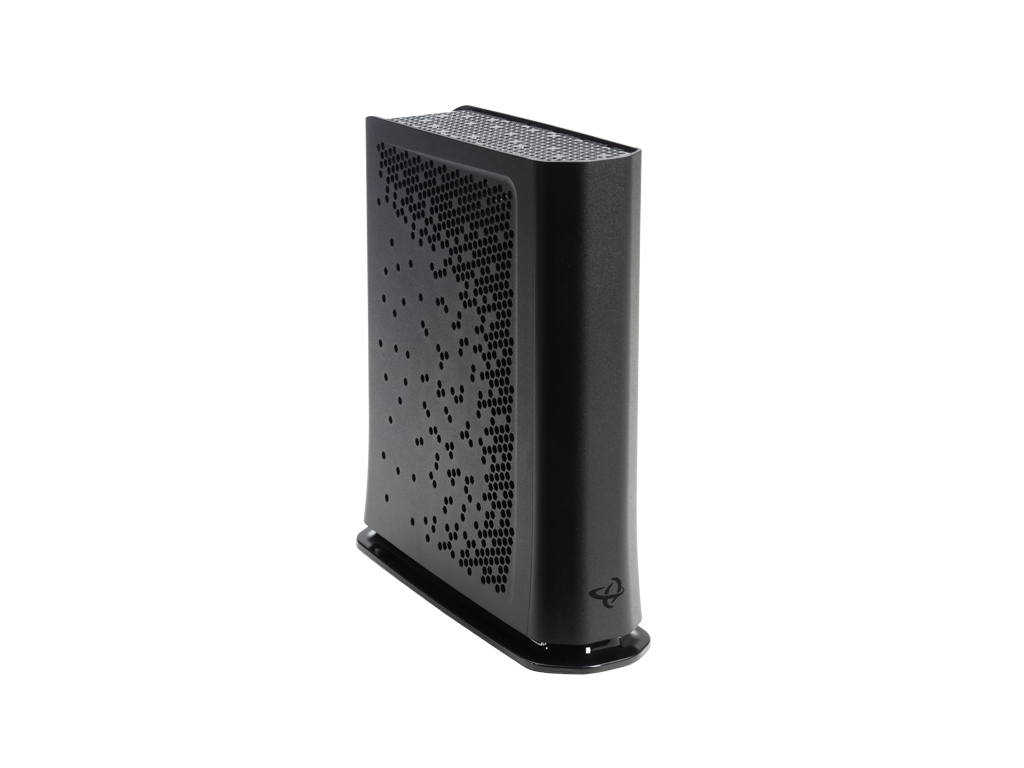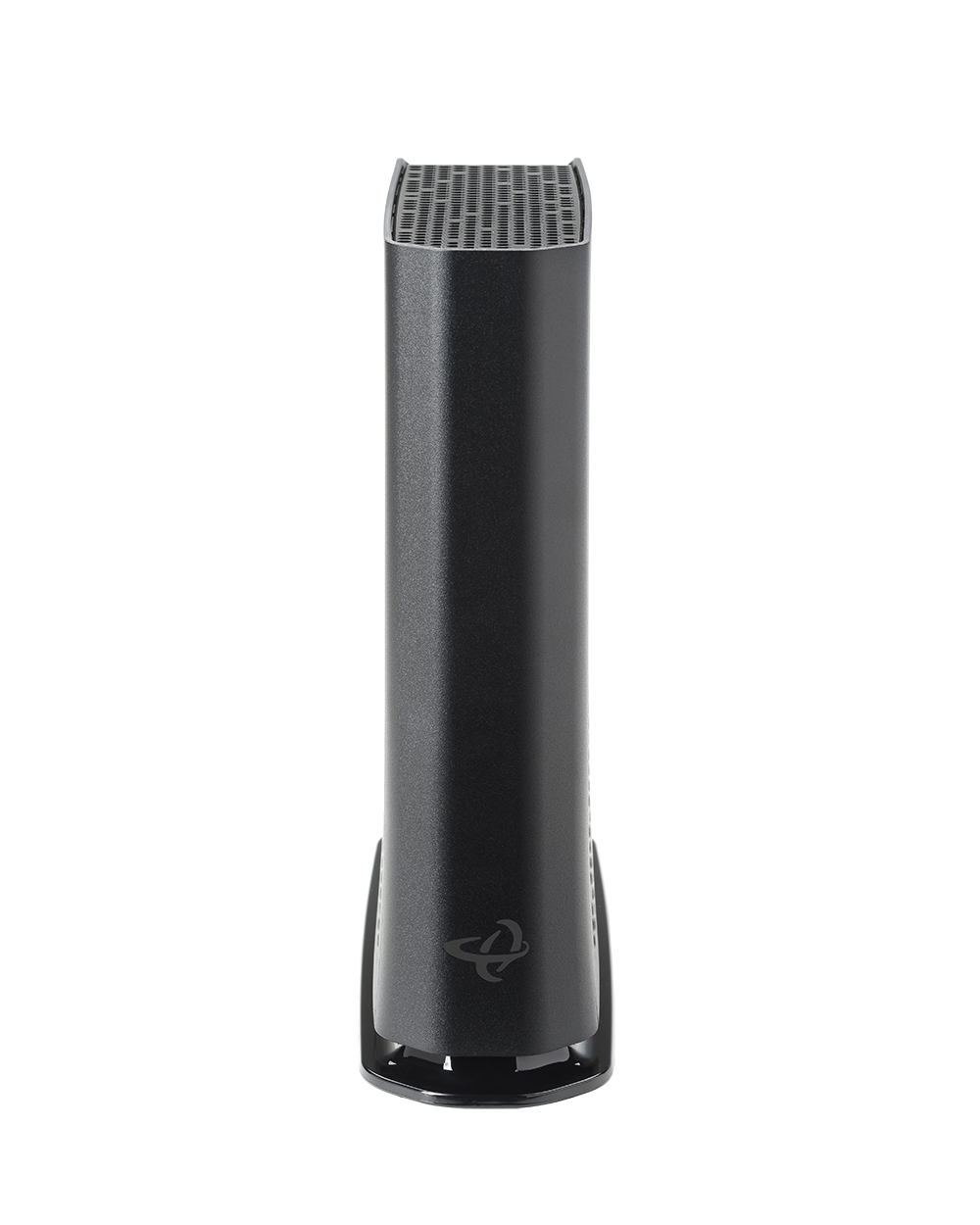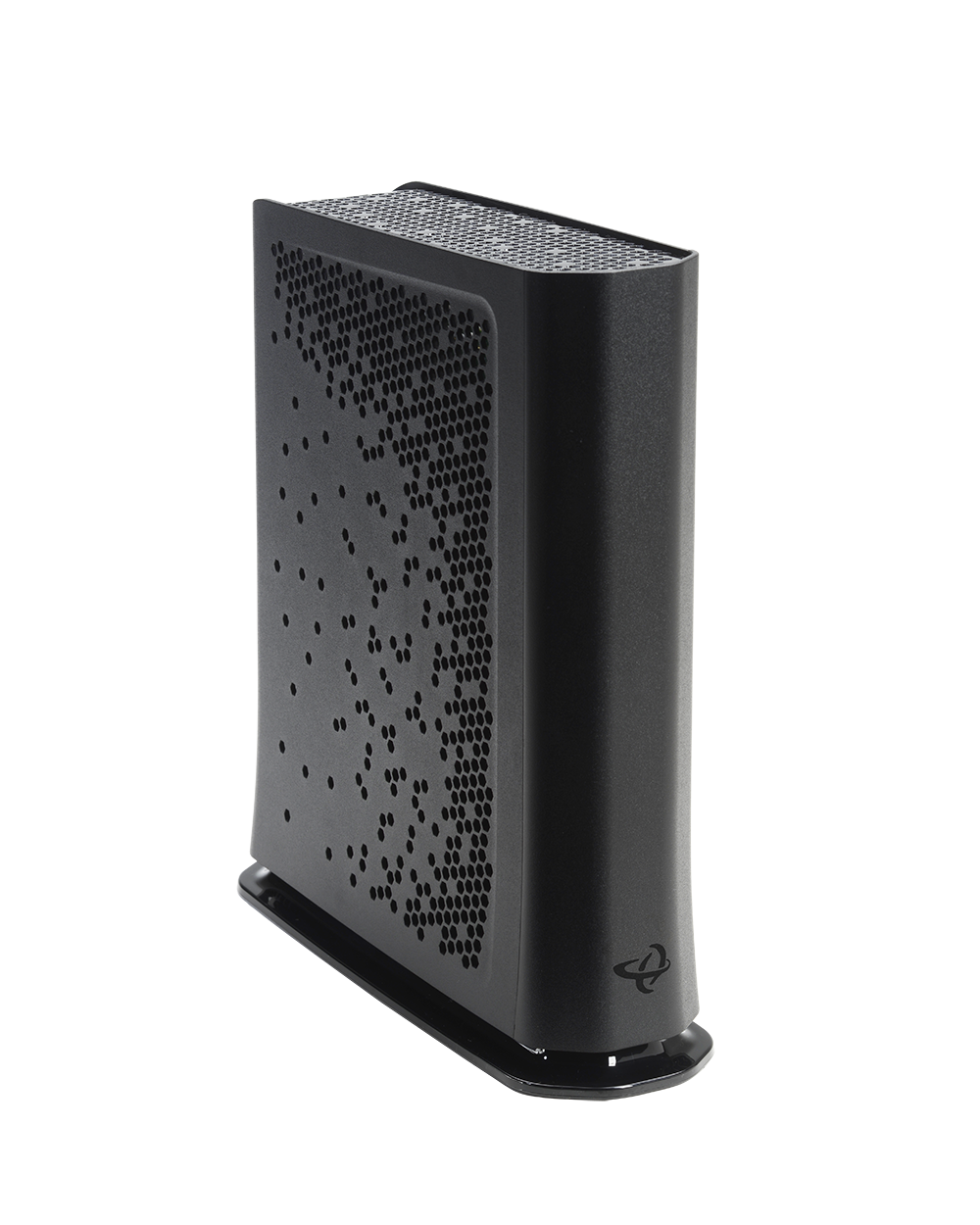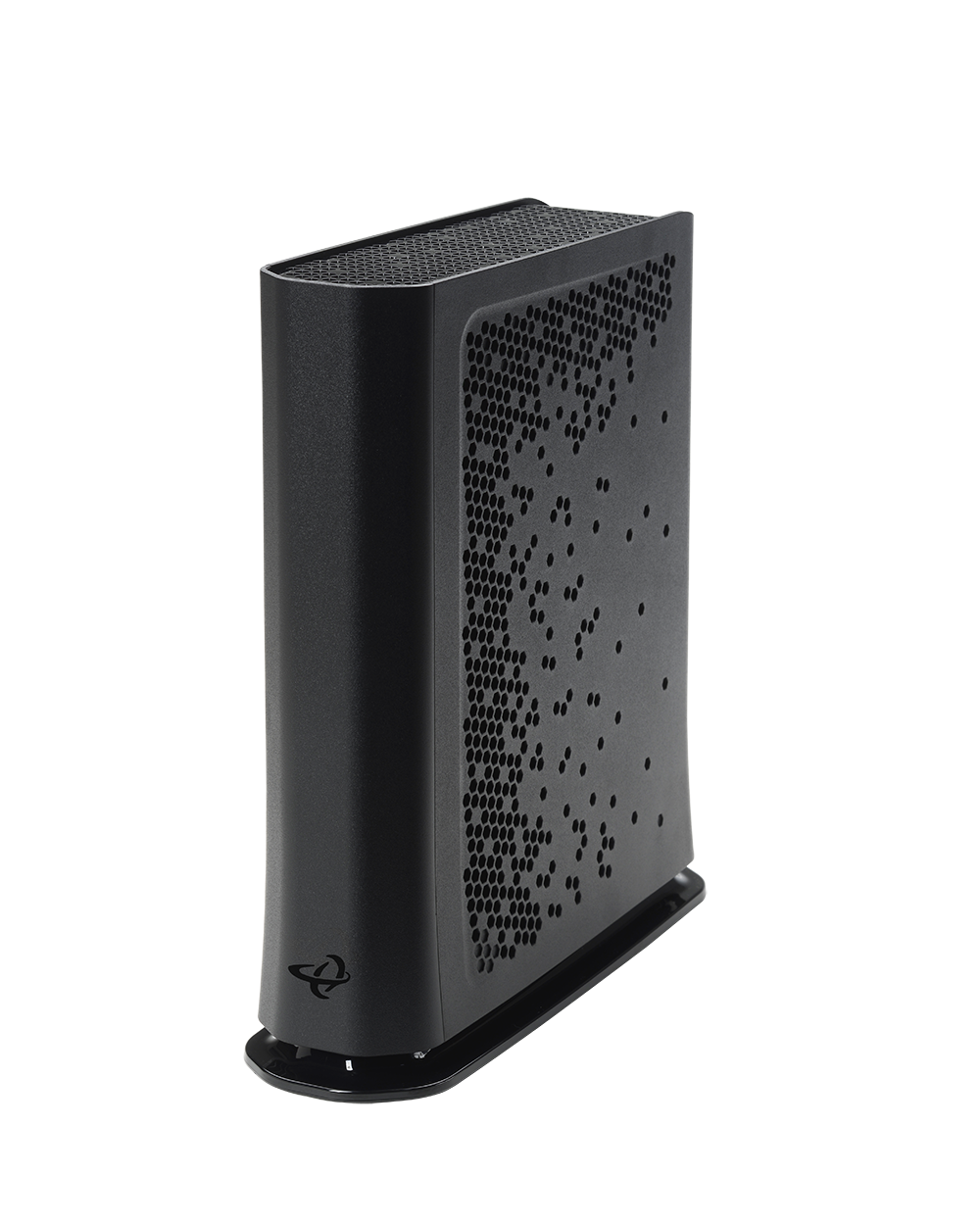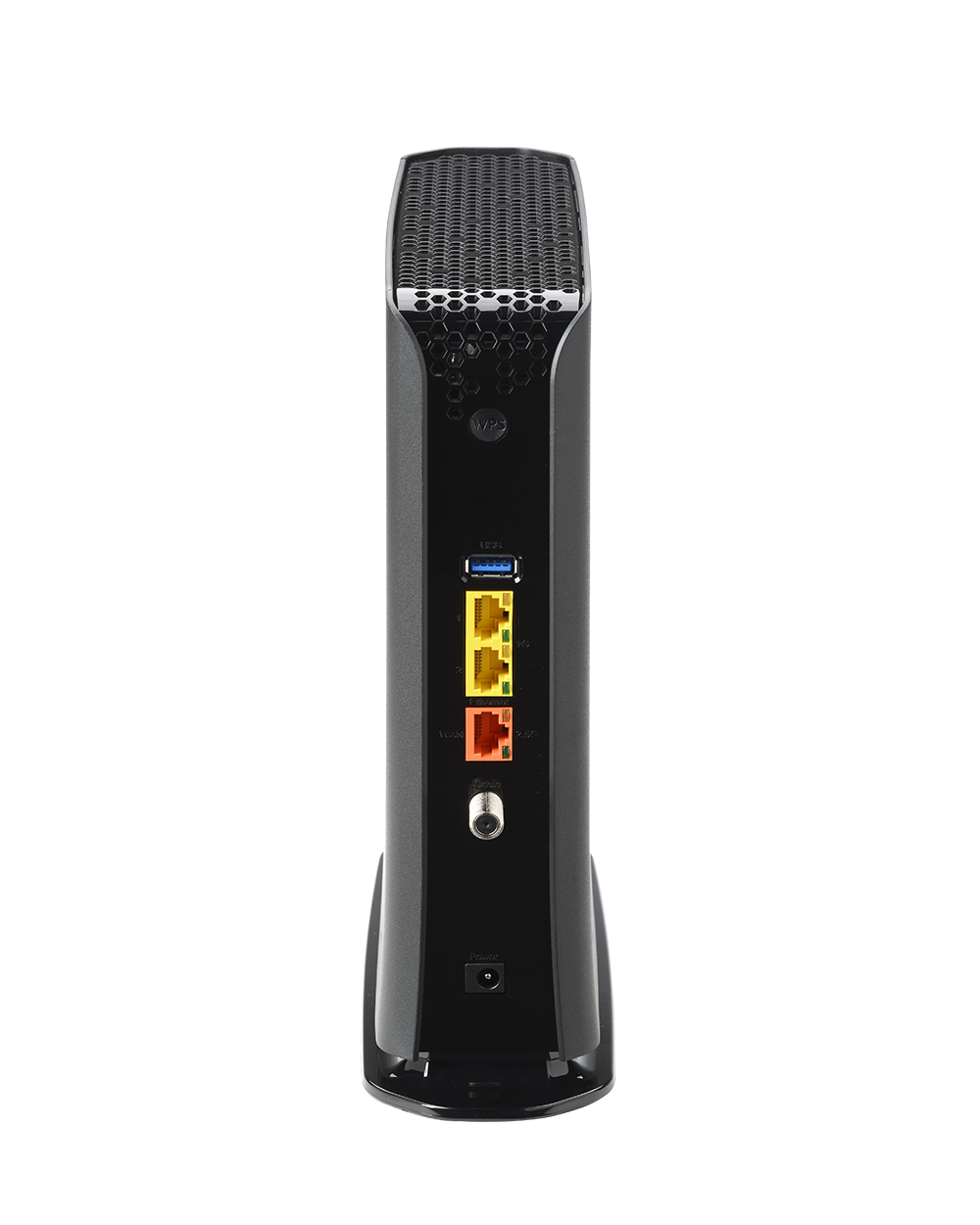DOCSIS 3.1 with DOCSIS 3.0 Compatibility
2×2 OFDM/OFDMA + 32×8 DOCSIS 3.0 bonding ensures multi-gigabit downstream capability with backward compatibility for existing networks.
Flexible Return Path for Future-Ready Upgrades
Switchable upstream (5–42 MHz / 5–85 MHz) supports migration to mid-split deployments without replacing hardware.
Wi-Fi 6 Advantage
Dual-band Wi-Fi 6 with 4×4 5 GHz and 4×4 2.4 GHz radios delivers faster speeds, better range, and more efficient use of spectrum to handle today’s connected homes.
Multi-Gig Wired Connectivity
2× 2.5 Gbps Ethernet ports plus 2× 1 Gbps ports support premium wired devices and high-bandwidth backhaul.
Carrier-Grade Management
TR-069, TR-369, HNAP, SNMP, and TFTP for simplified provisioning and remote troubleshooting—reducing support costs and truck rolls.
TPIA Market Approved
Approved by many Canadian carriers for the TPIA market, ensuring wide compatibility and streamlined deployments for wholesale ISPs.
Benefits for Service Providers
- Optimized for Mid-Tier Service Plans: Provides reliable Wi-Fi 6 and multi-gig wired support without overspecifying for basic packages.
- Simplified Deployments: Combines modem and router functionality into a single, operator-friendly gateway.
- Proven Market Acceptance: Pre-approved for TPIA use by leading Canadian carriers, making it easy to adopt and deploy at scale.
- Subscriber Satisfaction: Meets the growing demand for faster, more stable Wi-Fi and wired performance in modern households.
Key Specifications
- DOCSIS Support: DOCSIS 3.1 (2×2 OFDM/OFDMA) + DOCSIS 3.0 (32×8)
- Upstream: Switchable 5–42 MHz / 5–85 MHz
- Wi-Fi: Dual-band Wi-Fi 6 (4×4 5 GHz + 4×4 2.4 GHz)
- Ethernet Ports: 2× 2.5 Gbps + 2× 1 Gbps
- Management: TR-069, TR-369, HNAP, SNMP, TFTP
- Other Features: IPv4/IPv6, multiple SSIDs, integrated DLNA media server, advanced firewall
Documentation
Other Products to Consider
Product
Modem Type
Frequency
WiFi
Wired LAN
Voice
Learn More about Cable Modems & Routers
Do Cable Modems Need a Router?
Do Cable modems need a router? While your cable modem doesn’t need a router to deliver an Internet connection, the addition of a router offers the benefits of a WiFi connection and adds flexibility to your home network. Your home network is only as good as the...
Are All Cable Modem Router Combos the Same?
While upgrading networking equipment can be a hassle, it’s an essential part of optimizing your Wi-Fi and getting the best speeds and connection possible. Before you make a purchasing decision, it’s important to understand how cable modems, routers, and cable modem...
What is Required to be an Approved Spectrum Modem?
To be approved by Spectrum, a modem must support DOCSIS 3.1, be tested by Spectrum for performance, and appear on their official list of authorized devices. Choosing a Spectrum-approved modem ensures compatibility, reliable speeds, and full support from your provider....
Cable Modem Routers: Beamforming vs Band Steering vs MU-MIMO
Here’s what you need to know about MU-MIMO, beamforming, and band steering. Each technology is very similar in making a WiFi network faster and more efficient, but they do have slight differences. Let’s break it down. What is Beamforming? Beamforming is a router...
Cable Modem Router Combo vs. Cable Modem Separately – Which is Better?
Home networking can be as simple or as complicated as you want. When it comes to your Wi-Fi home network set up, you need two things for a Wi-Fi connection: a modem and a router. The modem is a device that delivers data from your Internet service provider (ISP),...
